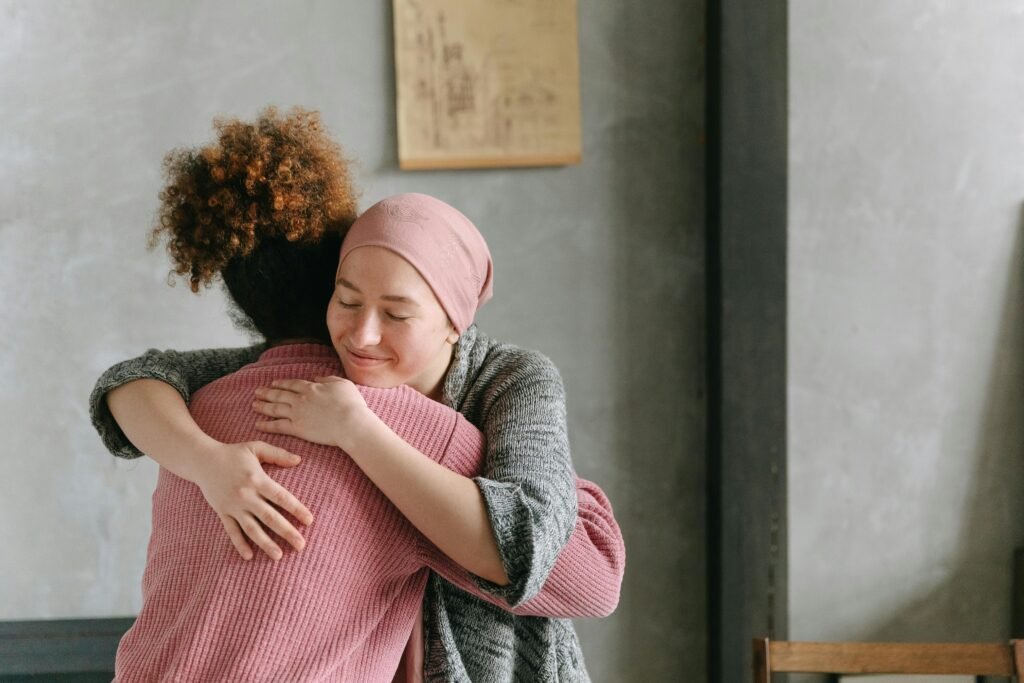TL;DR:
- Cancer care goals: eradicate cancer, shrink tumors, prevent spreading, prolong life, and improve quality of life.
- Treatment types: Local (surgery, radiation) vs. systemic (chemotherapy).
- Common side effects: Chemotherapy (hair loss, nausea, fatigue), Radiation (skin changes, fatigue, pain).
- Precision medicine customizes treatment based on genetic markers; challenges include cancer adaptability.
- Genetic analysis helps tailor treatments; 45% of UCSF patients have treatable mutations.
- Supportive care eases symptoms and includes integrative therapies (e.g., acupuncture, yoga).
- Cost management strategies: direct primary care, telemedicine, financial aid, generic medications, outpatient care.
The battle against cancer can feel like a marathon rather than a sprint. With treatments ranging from surgery to powerful meds, the complexity of care and treatment of cancer can seem overwhelming. Navigating this landscape means understanding the primary goal: whether to fully eradicate cancer or slow its progress for a better quality of life if that’s too ambitious. So, how do you make sense of it all and find the strategies that spell success? Stick around as we break down the basics and give you the tools you need for a winning fight against cancer!
Understanding the Basics of Cancer Care and Treatment
Cancer care focuses on tackling the “big C” with a strategic plan. The main goals are to eliminate cancer fully or slow its progress so you can enjoy more days without symptoms. Whether through surgery, radiation, or medication, the aim is to cure, shrink, or stop the cancer from spreading.
There are local and systemic treatment options. Local treatments, like surgery and radiation, target the tumor or a specific area in your body. They’re precise, like a SWAT team for rogue cells. Systemic treatments, such as chemotherapy, take a broader approach, targeting cancer cells throughout the body.
- Eradicate cancer completely
- Shrink tumors to manageable sizes
- Prevent cancer from spreading
- Prolong life with fewer symptoms
- Improve overall quality of life
Every cancer care plan is unique. Personalized treatment plans are vital because each person’s cancer journey is different. Your healthcare team crafts a plan tailored to your needs, ensuring optimal care. Preparing for a personalized fight against cancer sets the stage for effective treatment.
Chemotherapy and Radiation Therapy: Core Treatments in Oncology

Chemotherapy is a crucial part of cancer treatment. It uses drugs to target and destroy cancer cells, taking on even severe cases. Its primary method is attacking rapidly dividing cells, a cancer hallmark. However, this also affects healthy, fast-dividing cells, like those in the hair, skin, and gut. Side effects may include hair loss, nausea, and fatigue, but your healthcare team can help you manage these challenges along the way.
Radiation therapy is a high-energy beam that targets and destroys cancer cells. It’s like a precision operation for tumors. The treatment is painless, but the side effects can vary, depending on the target area. You might experience skin changes, fatigue, or localized pain—signs your body is working hard to heal.
| Treatment Type | Common Side Effects |
|——————-|——————————|
| Chemotherapy | Hair loss, nausea, fatigue |
| Radiation Therapy | Skin changes, fatigue, pain |
Managing these side effects is essential, and that’s where the experts come in. Your healthcare team has strategies to keep you comfortable and healthy, including medications and lifestyle changes. Don’t hesitate to rely on them—they’re here to support you in your cancer battle.
Personalized Cancer Treatments and Precision Medicine
Precision medicine offers tailor-made cancer treatment. It customizes plans based on your genetic markers, similar to your body’s unique fingerprints. Precision medicine offers therapies that are more effective and less harmful to healthy cells by focusing on these markers. It has transformed cancer care by allowing doctors to find the cancer’s cause and tackle it accurately.
However, personalized treatments face challenges due to cancer’s ability to adapt and resist. It can change tactics, making it challenging to treat. Researchers are developing new drugs and combinations to overcome these obstacles. While complete success hasn’t been achieved yet, progress has been substantial.
Genetic Analysis in Precision Medicine
Genetic analysis is like detective work at the cellular level. Doctors can identify specific mutations for targeted treatments by sequencing a tumor’s DNA. For example, at UCSF, about 45% of patients have mutations that are treatable with current therapies. This means they receive a treatment plan tailored to their cancer’s genetic profile, maximizing strengths against cancer.
Looking ahead, precision medicine’s future in oncology is promising. As technology advances and genetic understanding deepens, these approaches will become more precise and accessible. There’s a vision that one day, each cancer treatment will be as unique as the patient, maximizing effectiveness and minimizing side effects.
Integrative and Supportive Care in Cancer Treatment

Supportive cancer care acts like a safety net. Its main goal is to ease pain and symptoms and maintain quality of life while battling cancer. When facing cancer’s challenges, having a care team focused on comfort is invaluable. By managing side effects and offering emotional support, they empower you to live as fully as possible during treatment.
Integrative cancer care combines standard treatments with complementary therapies for a holistic approach. Here are some common methods alongside traditional treatments:
- Acupuncture: Alleviates pain and nausea
- Massage therapy: Reduces stress and muscle tension
- Yoga: Enhances flexibility and reduces stress
- Mindfulness meditation: Promotes relaxation and mental clarity
- Nutritional counseling: Supports health and treatment response
A comprehensive care plan pulls these elements together. A team of healthcare professionals can guide you through treatments and therapies. By working with doctors, nurses, and support staff, you create a roadmap tailored to your unique needs, ensuring optimal care.
Cost Considerations and Accessibility in Cancer Treatment
Costs for care and treatment of Cancer can be overwhelming, from chemotherapy to radiation sessions. This financial burden often affects access to care. Here’s a hopeful approach: direct primary care. This model avoids insurance companies, making healthcare more affordable and straightforward. By eliminating middlemen, patients focus on receiving care without insurance stress.
- Explore direct primary care models.
- Utilize telemedicine for remote consultations.
- Seek financial assistance programs.
- Opt for generic medications when possible.
Home services and outpatient care offer another way to ease financial strain. Receiving treatment at home or through outpatient services reduces hospital stays and costs. Plus, it’s more convenient, allowing you to maintain your routine. This approach saves money and makes cancer care more accessible for everyone.
Final Words
Exploring care and treatment of cancer reveals a landscape focused on battling cancer while supporting patient well-being. From local and systemic therapies to advanced treatments like precision medicine, we’ve unpacked the various strategies to tackle this disease. Managing chemotherapy and radiation therapy’s side effects is crucial, as is creating personalized regimens.
Personalized cancer treatments, with insights from genetic analysis, can revolutionize care precision. Integrated supportive approaches enhance patient quality of life. Amid spiraling costs, models like direct primary care boost accessibility and affordability. Embrace these options for control over your cancer care journey.
FAQ
Q: What is the latest in cancer treatment?
A: The latest in cancer treatment includes cutting-edge therapies like immunotherapy, which boosts the immune system to fight cancer, alongside advancements in precision medicine, where treatments are tailored based on genetic analysis.
Q: How does immunotherapy work as a cancer treatment?
A: Immunotherapy enhances or restores the immune system’s natural ability to fight cancer, helping to target and destroy cancer cells more effectively.
Q: What are the common side effects of cancer treatments like chemotherapy and radiation?
A: Common side effects of chemotherapy include fatigue, nausea, and hair loss, while radiation can cause skin irritation and tiredness. Managing these with healthcare professionals is key.
Q: How do cancer patients cope with treatments?
A: Cancer patients cope with treatments through supportive care, which eases symptoms and enhances quality of life, and integrative therapies that may include acupuncture, meditation, or nutritional support.
Q: What type of care do cancer patients most need?
A: Cancer patients need comprehensive care, including emotional support, symptom management, personalized treatment plans, and resources for financial and logistical assistance.
Q: What is cancer treatment and management all about?
A: Cancer treatment and management involve using surgery, medicines, and therapies targeted at curing or controlling cancer while ensuring patients have access to necessary care and support systems.
Q: What are the financial considerations and accessibility issues in cancer treatment?
A: Cancer treatment can be costly, impacting accessibility. Strategies to enhance affordability and access include utilizing direct primary care, opting for outpatient care, and exploring home services.

